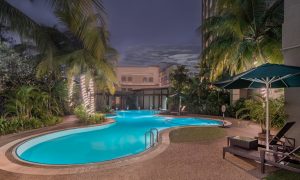Little India
Over the years, the Masjid India-Lebuh Ampang and Brickfields areas have vied to be the ‘Little India’ of Kuala Lumpur. While Brickfields is  traditionally associated with the local Indian population, the Masjid India-Lebuh Ampang area is in the heart of Kuala Lumpur’s city centre. Both areas are a hive of activity during Hindu celebrations like Deepavali. However, the Masjid India- Lebuh Ampang area is also a hit during the Muslim festival of Hari Raya Puasa. Many argue that Brickfields should be given the honour to become ‘Little India,’ a fact acknowledged by City Hall, which intends to turn the Masjid India-Lebuh Ampang area into Malay Street.
traditionally associated with the local Indian population, the Masjid India-Lebuh Ampang area is in the heart of Kuala Lumpur’s city centre. Both areas are a hive of activity during Hindu celebrations like Deepavali. However, the Masjid India- Lebuh Ampang area is also a hit during the Muslim festival of Hari Raya Puasa. Many argue that Brickfields should be given the honour to become ‘Little India,’ a fact acknowledged by City Hall, which intends to turn the Masjid India-Lebuh Ampang area into Malay Street.
Brickfields’ main road, Jalan Tun Sambanthan (near the Peking Hotel), best befits ‘Little India’ owing to its multitude of Indian cultural activities. Besides Deepavali (the ‘festival of lights’ for Hindus, celebrated annually with a great amount of grandeur), a walk through ‘Little India’ will have traders doing brisk business. Items sold include traditional Indian sweets, fruits, flowers, meat, greeting cards, and prayer items such as oils, joss sticks, and camphor, as well as spices.
‘Little India’ also gives you a glimpse into unique Indian culture through the display of Indian arts and handicraft, jewellery, accessories, traditional costumes, cookies, herbal products, restaurants, stalls, shopping venues, and music – all of which create a Bollywood-like atmosphere. Calls have been made to turn Jalan Tun Sambanthan, the heart and soul of Brickfields, into a major tourist attraction, just like Chinatown along Jalan Petaling. The Indian community has requested more lights and activities at night to make ‘Little India’ an active and happening place throughout the year, not just during festivals. Brickfields is already an excellent transportation hub, with Kuala Lumpur Sentral providing direct links to the Kuala Lumpur International Airport in Sepang with the Express Rail Link.
Chinatown
You’ll know you’ve reached Chinatown when you see stalls crowding the pavement in the heart of Kuala Lumpur along Jalan Petaling, Jalan Sultan, and Jalan Hang Lekir. Chinatown is an ideal place to practice your bargaining skills on anything – food, clothes, accessories, and handicrafts – all in one area. Among the goods available are decorative items, lanterns, flowers, mini water fountains, wristwatches, and Chinese zodiac wall clocks.
Apart from the numerous open-air eateries, there are hawker stalls selling glutinous pudding steamed in bamboo, an array of fruits (oranges, apples, cherries, pomeloes and sweetened vegetables), dried meat and floss, waxed ducks, dried sausages, and meat chops. It’s a place for Chinese New Year food and decorative items, but Chinatown is also lined with pharmacies or medicine halls selling herbs and animal parts used in traditional Chinese medicine.
Chinatown recently underwent a facelift when City Hall refurbished the area with modern sunshade canopies and repaved streets, making it more comfortable for shoppers to move around. Modern transport service like the Light Rail Transit makes it convenient for shoppers to get off at Plaza Rakyat (near Impiana Hotel Kuala Lumpur) or Pasar Seni (Central Market). Lined with budget hotels and hostels, Chinatown is also a haven for wandering backpackers.
This article was written by Adrian Logan
Source: The Expat November 2004
This article has been edited for Expatgomalaysia.com
Get your free subscription and free delivery of The Expat Magazine.
"ExpatGo welcomes and encourages comments, input, and divergent opinions. However, we kindly request that you use suitable language in your comments, and refrain from any sort of personal attack, hate speech, or disparaging rhetoric. Comments not in line with this are subject to removal from the site. "



















